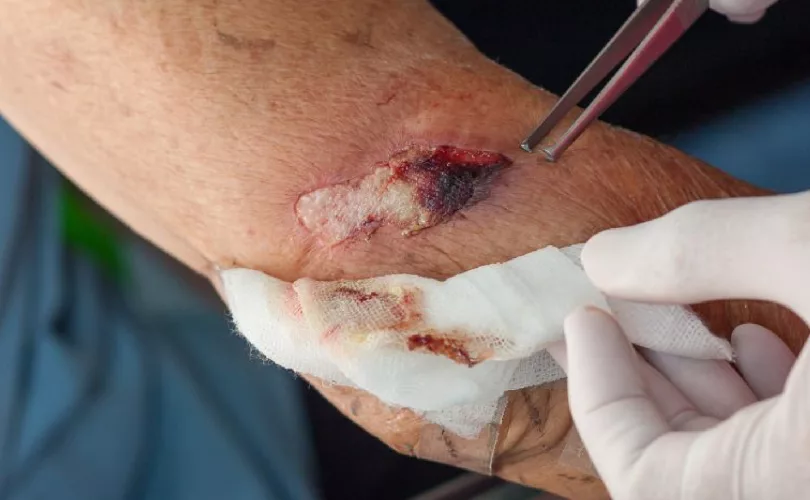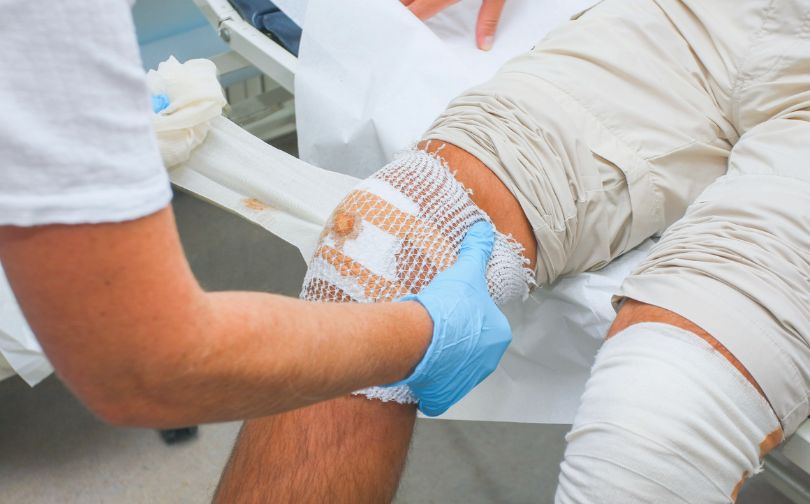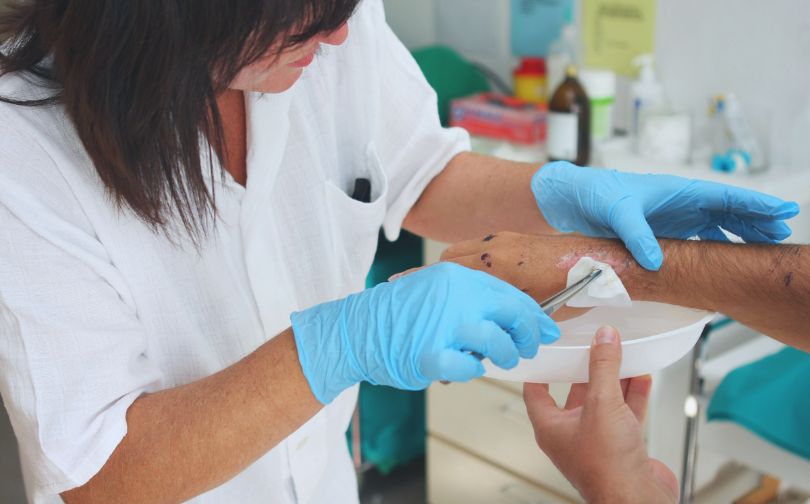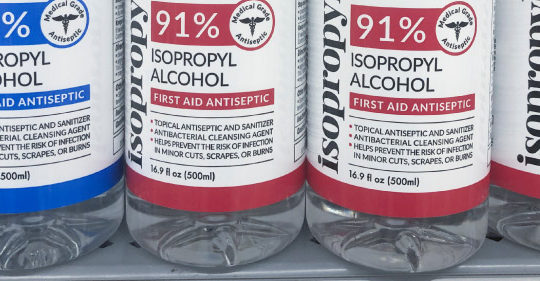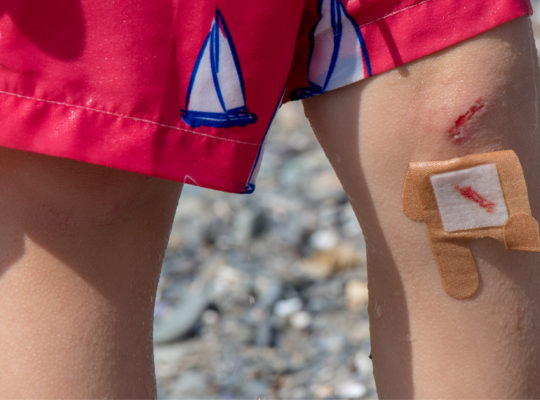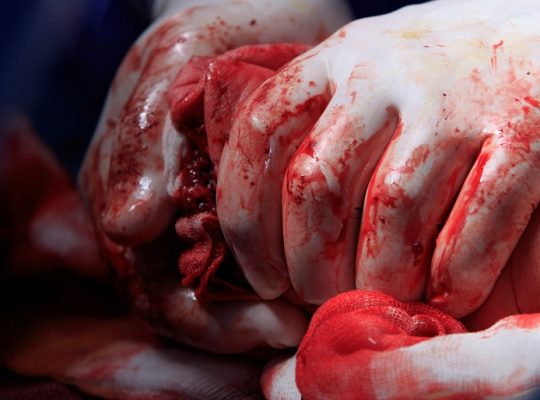When it comes to wound care, drainage can be a confusing aspect. Not knowing what to expect can leave many people feeling anxious and unsure. Wound drainage comes in several forms, each indicating something different about the healing process. Understanding the types can help you or a loved one manage recovery more confidently.
For many, distinguishing between normal and concerning drainage feels overwhelming. Questions arise about whether fluid color or amount signals a problem.
Here’s a fact: drainage is a natural part of healing, but changes in appearance or odor could mean an infection.
Sometimes, wound drainage is an indication that something is wrong – perhaps the wound isn’t healing properly or has become infected. Keep reading to find out about the different types of wound drainage and how to tell when it is serious.
By exploring the different types of wound drainage, you’ll have the knowledge to assess wounds better and know when professional care is necessary. Stick around, and we’ll break it all down for you!
Types Of Wound Drainage
Here are the 4 different types of wound drainage and how to identify them.
1. Serous Drainage
Serous drainage is a clear, watery liquid that leaks from a wound as it heals. It is low in protein, and is usually present if the wound is mildly inflamed. Inflammation is an important stage of wound healing, so it is good for the wound to show some serous drainage.
An excessive amount of serous drainage or serous exudate that is still being secreted past the inflammation stage could be a sign of high levels of germs of bacteria living on the surface of the wound. This could lead to infection, so the wound should be thoroughly cleaned.
2. Sanguineous Drainage
Sanguineous drainage is thicker than serous drainage – it has a consistency more similar to syrup than water. This is because it is bright red in color rather than pink, as it is a leakage of fresh blood.
This type of bleeding is perfectly normal when a wound is fresh, especially if the wound is deeper than the first few layers of skin.
When the wound becomes inflamed, the sanguineous drainage may continue. When the swelling eases, the sanguineous drainage should stop.
If it doesn’t, it may be a sign that the wound has sustained further damage or trauma. Knocking the wound or picking at it can cause this. It is important to keep the wound protected and to avoid disturbing it while it heals.
3. Serosanguineous Drainage
Serosanguineous drainage is the most common type of exudate. It is usually pink in color, but can sometimes be red depending on how many red blood cells are present. It has a thin consistency, like water. It is the combination of serous drainage and sanguineous drainage.
Serosanguinaeous usually comes from the capillaries. When the body is wounded, the area will become inflamed in order to attract immune cells.
These immune cells are important for healing the tissue. The inflammation also helps to protect the wound from further damage.
During this stage, the capillaries are more vulnerable to minor damage and will release exudate. This often happens when a wound dressing is being changed.
Serosanguineous drainage is normal during the healing of a wound and is not a cause for concern.
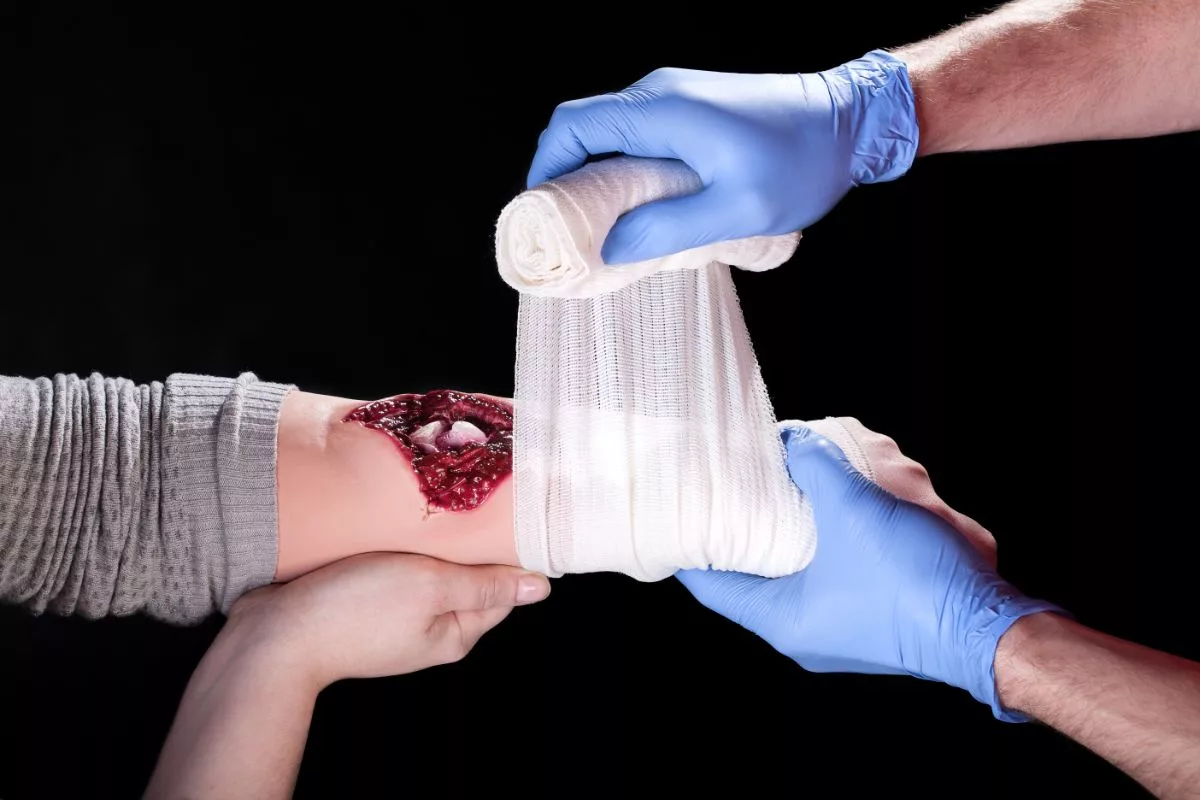
4. Purulent Drainage
Purulent drainage is a concern as it is not usually present in healthy wounds. It has a high concentration of dead cell matter, which gives it a thick consistency and a milky appearance. Sometimes it has a thinner texture, but it is usually yellow, creamy or green in color.
Purulent exudate is a sign that a wound is infected. The exudate has a high number of white blood cells and inflammatory cells that are trying to fight the infection and encourage your body’s immune system.
The dead cell matter is either dead tissue or dying bacteria from the infection. Purulent drainage often has an unpleasant aroma.
Purulent drainage is often present alongside other symptoms of an infected wound like redness, warmth, and worsening pain. If you notice purulent drainage then you should seek medical attention and professional treatment may be required to treat the infection.
How Long Does Wound Drainage Last?
Wound drainage typically lasts for 48 to 72 hours in the early stages of healing. During this period, clear, watery fluid known as serous drainage is common and reflects the body’s natural response to injury or surgery. This type of drainage is a healthy sign that the wound is clearing out excess fluid and cellular debris. As healing progresses, the amount of serous drainage should decrease.
However, the type and duration of drainage can vary depending on the wound’s severity and individual factors such as health conditions or complications. For example, sanguineous drainage, which contains fresh blood, is often seen in deeper wounds but should taper off within a few days. If purulent drainage, which is thick and cloudy, appears, this is a sign of infection and requires immediate medical attention, as prolonged drainage can lead to chronic wounds or delayed healing.
In some cases, surgical drains are used to manage excess fluid and are typically left in place for up to two weeks. The presence of drains, along with factors like diabetes or vascular conditions, may extend the period of drainage. Monitoring the wound for changes in drainage and consulting healthcare providers when necessary ensures that the healing process proceeds without complications.
How To Tell When Wound Drainage Is Serious
There are a few things you need to look out for when it comes to understanding whether wound drainage is normal or concerning.
Color
Normal wound drainage is usually clear, pink or sometimes red. Red drainage shouldn’t persist past the inflammation stage of wound healing.
If the exudate coming from the wound has a milky appearance, or is green, yellow or creamy in color, this is concerning. This is a sign of infection.
Odour
Healthy wound drainage should be odorless. It might have a metallic smell, like blood, but it won’t smell unpleasant. If wound drainage has a foul smell then it is a sign of infection, and likely indicates the presence of bacteria and dead tissue.
Timing
Wound drainage is a normal part of the healing process, but you need to pay attention to when it occurs. Clear, serous exudate is normal in the initial stages of healing.
Once the swelling has gone down, continuing signs of serous exudate could indicate the presence of bacteria.
Serosanguinaeous exudate is normal during the inflammatory phase, but fresh blood beyond this point suggests that the wound has sustained further trauma.
Consistency
Purulent drainage can be thin, but it is most often quite thick in texture. This is something to look out for when considering if wound drainage is serious or not.
How To Prevent Serious Wound Drainage
Serious wound drainage is usually only present in wounds that have become infected. To avoid infection, it is important to prevent any contaminants from entering the wound.
Wash your hands before touching the wound or changing dressings, and only use sterilized equipment. Make sure that any dressings applied are sterile. In case of a bigger wound, you can use a gauze compress which will act as the oversized wound dressing.
The wound should be kept clean and the dressings should be changed regularly. The wound needs to be protected from contaminants at all times. If you suspect that a wound has become infected, seek medical attention immediately.
Summary
Understanding the different types of wound drainage is crucial for managing wound care effectively. Normal drainage, such as serous and serosanguineous, reflects healthy healing, while sanguineous is common in fresh wounds but should decrease over time.
However, it’s essential to stay vigilant for signs of infection, like purulent drainage, which can indicate more severe complications. Color, odor, timing, and consistency all provide valuable clues about whether the wound is healing properly or requires medical attention.
Proper wound hygiene and regular monitoring can prevent infections and ensure a smooth recovery. If you notice any unusual changes in drainage, seeking professional care is always the best course of action to promote healing.

